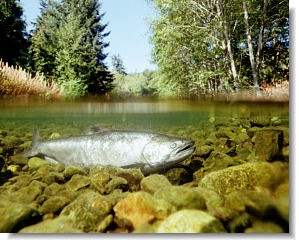Stand tending
Stand tending is a subset of silviculture that includes a variety o forest treatments, including pre-commercial thinning, fertilizing, pruning and commercial thinning, which are carried out to maintain a healthy forest and to increase the quality and quantity of timber produced.
On this page
- Forest fertilization
- Pruning
- Pre-commercial thinning or spacing
- Commercial thinning and partial cutting
Forest fertilization
Although other silviculture treatments may redistribute volume and/or increase piece size and value, fertilization is the most proven method for increasing harvest volume and accelerating the operability of established stands. As such, fertilization is widely viewed by forest managers and practitioners as a potentially valuable tool for mitigating "pinch points" in the mid-term timber supply caused by age class imbalances, and for increasing long term harvest levels.
Pruning
Pruning of lower branches of trees in plantations and in pre-commercially thinned stands can increase stand value by reducing the size of the knotty core, thereby increasing the amount and proportion of more valuable clear (knot free) wood. Dimensional lumber that is "clear" of knots and defects has historically commanded premium prices on world markets. Pruning may also improve log and lumber value by speeding the change from lower value juvenile wood to higher value mature wood and by reducing stem taper.
- Pruning Guidebook
- Land Based Investment - Pruning Activity
- Pruning Training
- Clear Wood Values from Pruning (PDF, 569KB)
Pre-commercial thinning or spacing
Terminology such as "juvenile thinning," "juvenile spacing," "spacing" and "pre-commercial thinning" generally refers to cuttings made in immature stands with the objective of reducing stand density in order to stimulate the growth of the remaining crop. Thinning affects the size and growth of individual trees and also the growth per unit area of the stand itself. The timing and intensity of juvenile thinning has large potential impacts on the amount, size and value of timber harvested from managed forests and on biological and technical rotation lengths. By preventing, or alleviating, height repression, juvenile thinning in extremely dense stands may provide a more reliable estimate of site potential as represented by site index.
- Spacing Guidebook
- Land Based Investment - Spacing Activity
- Spacing Training
- Forest Health Decision Keys Coastal (PDF, 263KB)
- Forest Health Decision Keys Interior (PDF, 189KB)
- Spacing to Increase Diversity Within Stands (PDF, 1.2MB)
- How to Use a Stand Density Management Diagram - Getting the Stand and Site Data (PDF, 461KB)
- How to Use a Stand Density Management Diagram - Yield Predictions for a Spacing Prescription (PDF, 320KB)
- Guidelines for Developing Stand Density Management Regimes (PDF, 320KB)
Commercial thinning
Thinning is the cutting of individual trees from a stand to maintain or improve the health of remaining trees by providing space and resources for growth (e.g., sunlight, water, and nutrients). Commercial thinning refers to an intermediate harvest, as part of a broader stand development pathway, where merchantable volume is removed earlier than final harvest. Thinning can be applied within even-aged stands but can also be used to restore complex stand structures and accelerate forest succession, with a broad goal of preparing stands for uneven-aged silvicultural systems rather than clearcuts.
Thinning is a stand management activity within a silvicultural system practiced in many jurisdictions around the world. Thinning can be used to:
- Provide access to supplementary fibre where the is a shortage in flow
- Maintain a reasonable growth rate of remaining trees through reduced competition for site resources
- Reduce impacts of forest damage factors, such as drought, insects, and disease
- Manage for a range of non-timber stewardship values
Please direct questions to the Intensive Silviculture Specialist at ThinningSupport@gov.bc.ca
Commercial thinning guidance:
- Chief Forester's thinning guidance memo 2025 (PDF, 214KB)
- Thinning guidance for British Columbia 2025 (PDF, 3MB)
- Interim Guidance for Commercial Thinning - Interior British Columbia (2021) (PDF, 2MB)
- Guidelines for Commercial Thinning (1999) (PDF, 1MB)
- Partial Cutting Overview of Ministry Material (PDF, 448KB)
- Forest Level Benefits to Commercial Thinning and Fertilization - SIL439 (PDF, 332KB)
- Tree wounding and partial-cut harvesting: a literature review for British Columbia (PDF, 415KB)

Appropriate training for forest managers is crucial to good forest management. The ministry provides online training resources for forest managers.
